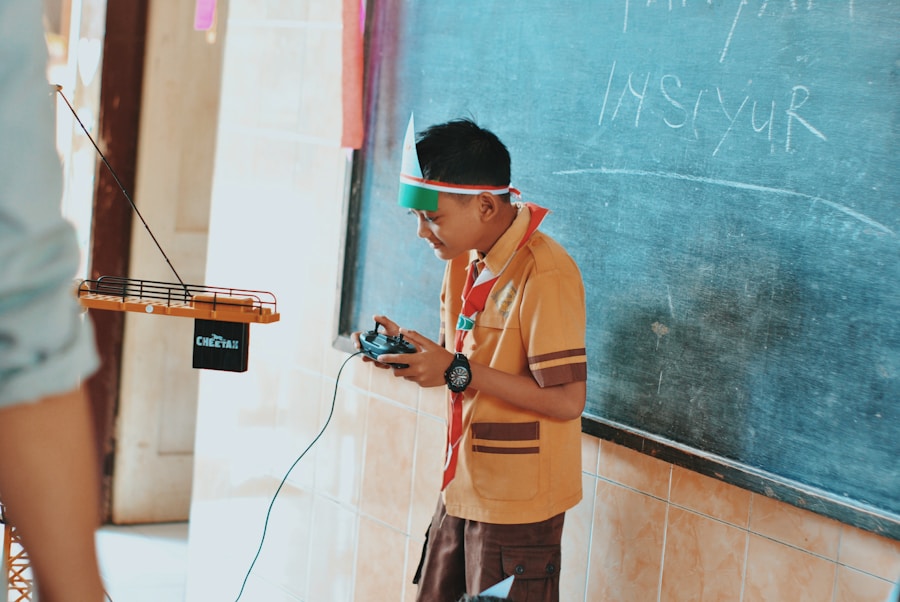In the realm of performance, the significance of practice and preparation cannot be overstated. For any artist, whether a musician, actor, or dancer, the foundation of success lies in the hours spent honing their craft. Regular practice not only enhances technical skills but also builds a sense of familiarity with the material.
This familiarity breeds confidence, allowing performers to focus on their artistic expression rather than merely executing notes or lines. The more time dedicated to practice, the more instinctive the performance becomes, transforming what could be a daunting experience into a natural flow of creativity. Moreover, preparation extends beyond mere repetition.
It encompasses understanding the nuances of the performance piece, including its emotional depth and contextual background. A well-prepared artist approaches their work with a comprehensive understanding of its elements, which allows them to convey the intended message more effectively. This level of preparation can also include physical conditioning, mental rehearsals, and even logistical arrangements for the performance itself.
By investing time in thorough preparation, performers set themselves up for success, ensuring that they can deliver their best when it matters most.
Key Takeaways
- Practice and preparation are crucial for a successful performance
- Understanding and managing the emotional and mental aspects of performance is key
- Developing stage presence and confidence is essential for connecting with the audience
- Connecting with the audience is important for a memorable performance
- Overcoming performance anxiety and nervousness is a common challenge for musicians
Understanding the Emotional and Mental Aspects of Performance
Performance is not solely a physical endeavor; it is deeply intertwined with emotional and mental dimensions. Artists often find that their emotional state can significantly influence their performance quality. Understanding this connection is crucial for any performer aiming to connect authentically with their audience.
Emotions can enhance a performance, allowing artists to convey feelings that resonate with viewers. However, managing these emotions is equally important, as anxiety or self-doubt can hinder an artist’s ability to express themselves fully. Mental preparation plays a vital role in navigating these emotional landscapes.
Techniques such as visualization and mindfulness can help performers center themselves before taking the stage. By envisioning a successful performance or practicing deep breathing exercises, artists can cultivate a calm and focused mindset. This mental clarity not only enhances their ability to perform but also allows them to engage more deeply with the emotional content of their work.
Ultimately, understanding and managing the emotional and mental aspects of performance can lead to a more profound connection with both the art and the audience.
Developing Stage Presence and Confidence

Stage presence is an essential quality that distinguishes a captivating performer from an average one. It encompasses the ability to command attention and engage an audience through charisma and authenticity. Developing stage presence requires practice and self-awareness; performers must learn to project confidence even in moments of uncertainty.
This can be achieved through various techniques, such as body language exercises, vocal training, and even improvisation practices that encourage spontaneity and adaptability on stage. Confidence is often built through experience. The more performers expose themselves to live audiences, the more comfortable they become in their own skin.
Each performance serves as an opportunity for growth, allowing artists to refine their stage presence over time. Additionally, seeking constructive feedback from peers or mentors can provide valuable insights into areas for improvement. By embracing these experiences and continuously working on their craft, performers can cultivate a magnetic stage presence that captivates audiences and leaves a lasting impression.
(Source: Psychology Today)
Connecting with Your Audience
| Platform | Engagement Rate | Audience Reach |
|---|---|---|
| 3.21% | 1.2 million | |
| 1.87% | 2.5 million | |
| 0.95% | 800,000 |
The ability to connect with an audience is one of the most powerful aspects of performance art. When performers establish a genuine connection with their viewers, they create an immersive experience that transcends mere entertainment. This connection often stems from vulnerability; when artists share their authentic selves, audiences are more likely to resonate with their message.
Whether through storytelling, emotional expression, or shared experiences, creating this bond is essential for impactful performances. To foster this connection, performers must be attuned to their audience’s reactions and energy. Reading the room allows artists to adjust their delivery in real-time, enhancing engagement and interaction.
Techniques such as eye contact, gestures, and vocal dynamics can help bridge the gap between performer and audience. Additionally, incorporating elements that invite audience participation can further strengthen this bond. Ultimately, connecting with an audience transforms a performance into a shared experience, leaving both the artist and viewers enriched by the encounter.
Overcoming Performance Anxiety and Nervousness
Performance anxiety is a common challenge faced by many artists, regardless of experience level. The fear of judgment or failure can create significant barriers to delivering a successful performance. However, understanding that this anxiety is a natural response can help performers reframe their mindset.
Many seasoned artists have experienced similar feelings before taking the stage; recognizing this shared experience can provide comfort and reassurance. To combat performance anxiety, various strategies can be employed. Preparation remains key; knowing one’s material inside out can alleviate some of the fear associated with performing live.
Additionally, developing a pre-performance routine—whether it involves physical warm-ups, breathing exercises, or positive affirmations—can help calm nerves and instill confidence. Embracing mindfulness techniques can also aid in grounding oneself in the present moment, allowing performers to focus on their art rather than potential pitfalls. By addressing performance anxiety head-on and implementing coping strategies, artists can transform nervous energy into a powerful driving force during their performances.
The Role of Technique and Musicality in Performance

Technical Skill: The Backbone of a Performance
Technical skill and musicality are the cornerstones of a successful performance. While emotional expression is crucial, it must be supported by solid technical skills to ensure that the artist’s vision is realized effectively. Mastery of technique allows performers to execute their pieces with precision and clarity, providing a strong framework upon which they can build their artistic interpretation.
Musicality: The Heart of a Performance
Musicality goes hand in hand with technique; it involves understanding the subtleties of rhythm, phrasing, dynamics, and expression within a piece. A technically proficient performer who lacks musicality may deliver a flawless rendition but fail to evoke emotion or connect with the audience on a deeper level. Conversely, an artist with strong musicality may captivate listeners even if their technique is not perfect.
Striking a Balance
Striking a balance between technical skill and musicality is essential for creating memorable performances that resonate with audiences long after the final note has been played. By combining these two elements, performers can create a truly unforgettable experience that leaves a lasting impact on their audience.
Collaborating with Other Musicians and Artists
Collaboration is an enriching aspect of the artistic journey that can lead to innovative performances and new creative insights. Working alongside other musicians or artists allows individuals to share ideas, techniques, and perspectives that can enhance their own artistry. Collaboration fosters an environment of mutual growth; each participant brings unique strengths that contribute to a collective vision.
Moreover, collaborating with others often challenges artists to step outside their comfort zones. This exposure to different styles or genres can inspire new approaches to performance and encourage experimentation. Whether through formal ensembles or informal jam sessions, these interactions can lead to unexpected synergies that elevate the overall quality of the work produced.
Ultimately, collaboration not only enriches individual artistry but also strengthens the artistic community as a whole.
Utilizing Technology and Social Media for Performance Opportunities
In today’s digital age, technology plays a pivotal role in expanding performance opportunities for artists. Social media platforms provide avenues for sharing work with broader audiences than ever before. Musicians can showcase their talents through live streams or recorded performances on platforms like Instagram or YouTube, reaching fans across the globe without geographical limitations.
Additionally, technology facilitates collaboration in new ways; artists can connect with peers remotely, sharing ideas and creating music together despite physical distance. Online communities offer support networks where performers can exchange feedback and resources while discovering new opportunities for collaboration or gigs. By embracing technology and social media as tools for promotion and connection, artists can enhance their visibility and create meaningful relationships within the artistic community.
In conclusion, mastering the art of performance involves a multifaceted approach that encompasses practice, emotional awareness, stage presence, audience connection, anxiety management, technical skill development, collaboration, and technological engagement. Each element plays a crucial role in shaping an artist’s journey toward success on stage. By embracing these aspects holistically, performers can cultivate their unique voices while creating impactful experiences for themselves and their audiences alike.
Music performance is a powerful tool that can enhance the overall experience of patients in healthcare settings. According to a recent article on enhancing patient experience through interactive healthcare kiosks, music can help create a calming and soothing environment for patients, reducing anxiety and stress levels. This highlights the importance of incorporating music performance into healthcare practices to improve patient outcomes and overall satisfaction.
FAQs
What is music performance?
Music performance refers to the act of presenting music to an audience through live or recorded means. It can involve singing, playing instruments, or a combination of both.
What are the different types of music performance?
Music performance can take many forms, including solo performances, ensemble performances, orchestral performances, choral performances, and more. It can also be categorized by genre, such as classical, jazz, rock, pop, and world music.
What skills are required for music performance?
Music performance requires a combination of technical proficiency on an instrument or with vocals, as well as an understanding of musical theory and interpretation. Additionally, performers need stage presence, communication skills, and the ability to connect with an audience.
How do musicians prepare for a music performance?
Musicians prepare for a performance by practicing their repertoire, refining their technique, and rehearsing with other musicians if performing in an ensemble. They also work on stage presence, interpretation, and memorization of the music.
What are some common venues for music performance?
Music performances can take place in a variety of venues, including concert halls, theaters, clubs, outdoor stages, churches, and more. The choice of venue often depends on the type of music being performed and the size of the audience.
What is the role of a music performance in the music industry?
Music performances are a crucial part of the music industry, as they provide a platform for artists to showcase their talent, connect with fans, and generate income through ticket sales and merchandise. Live performances also help to promote and market recorded music.





